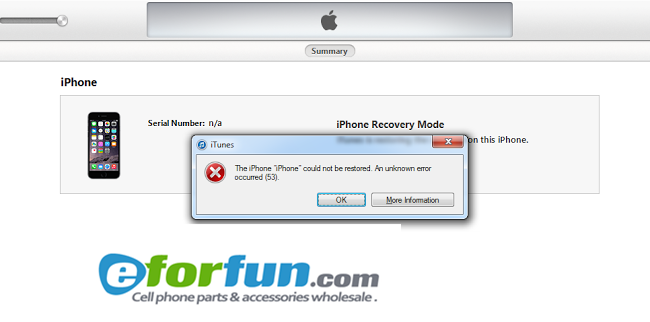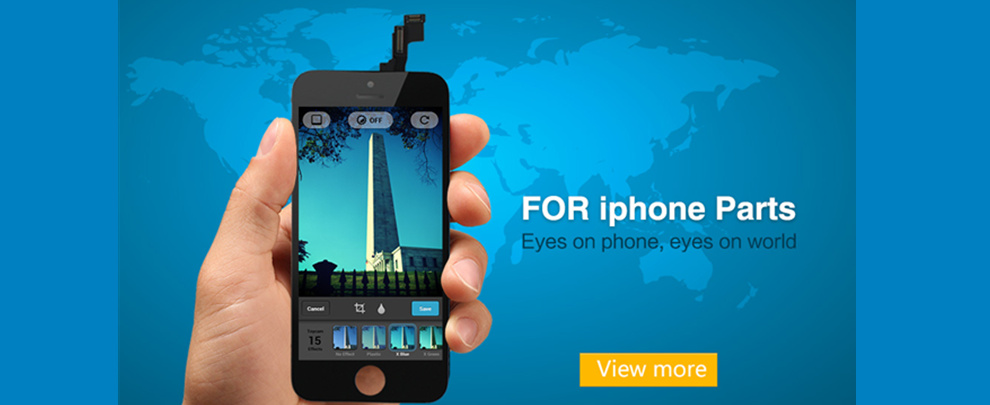Facing iTunes error 53 on iPhone 6 or 6 Plus? Here are 6 ways to fix error 53 from iTunes. iTunes to date remains one of the great media players ever invented. The program is simple and easy to understand. With it, you can download and listen to music on your device seamlessly.
That said, it is not free of errors, and one major problems faced by iTunes users is the "error 53" which can appear while the program is running or during the iPhone restoring / updating process.

The message that you see when this error appears is the following:
"The iPhone "iPhone" could not be restored. An unknown error occurred (53).
As visible in the following thread, the user was trying to update his iPhone 6 Plus to iOS 8 or iOS 9, when the error 53 appeared in iTunes. In a few cases, when the iPhone is being updated and the iTunes error 53 appears, the device may become bricked.
To avoid this from happening, here are 6 things you can do to get rid of this error.
#1: Wipe the registry clean
This is a possible solution to Fix iTunes Error 53 on iPhone 6 or 6S. The registry can be cleaned and this is a pretty useful action to take every time you install or install some programs. It also helps in speeding up your PC. It is a simple endeavor and pretty beneficial. You can do it with Clean Registry on Mac or Clean Registry on Windows. After that, just restart your PC and try to restore your device again.
#2: Wipe clean junk files
There are ample cache and log files accumulated by each operating system after some time. If you don’t periodically clean out this junk, your iTunes software can become extremely slow or display the "Unknown error 53" message, which may be due to an overburdened hard drive or file conflicts. As a result, you need to clean junk files on Mac or clean junk files on Windows. Then you need to relaunch iTunes and try to restore the device (You should now fix the error 53).
#3: Do Windows updates
Microsoft works hard to improve system files that could be resulting in the 53 error. Update your Windows version with the latest service pack and other releases, which can remove system errors and improve performance. You can do this by clicking the Start button, typing “update” in the search box and pressing Enter. After that, choose “Install Updates” from the update box.
#4: Do PC drivers updates
Outdated or damaged device drivers can also be the cause of iTunes error 53. The drivers can stop working altogether for several reasons. Therefore, you need to update the device drivers to fix iTunes error 53 issue.
Mac users can choose iTunes from the iTunes Menu and look for Updates.
Windows users can choose Help from the menu bar and check for Updates.
#5: Reinstall iTunes
On your PC you can reinstall iTunes with easy. Just go to Add or Remove Programs -> Uninstall iTunes. Now download the latest iTunes version and install it again. Restart your PC and try again. This may help you to fix error 53 from iTunes.
#6: Restore your iPhone with the Original Touch ID button
Did you replaced the display or the touch id button on your iPhone? The touch id is directly connected with the motherboard and if you replace the Touch ID button you will get a error 53 when you try to restore your device via iTunes. How to fix error 53 now? Just use the old (original) touch id button and try to restore your device.
Update: Extra tip to fix iTunes error 53 iPhone 6 / 6S
The possible problem for Unknown Error 53 is the incorrect screw placement in the screen replacement process. There are totally four screws that hold the touchscreen connectors and the LCD. If you place the longest screw in a wrong hole, it can damage one of the layers of the mother board. There's no way to fix it. You can visit Apple Retail Store to replace it under warranty.
Other way to fix iTunes error 53 is to change the IC from your old home touch ID button. You need to remove it from the old (original) touch id and put it to the new home button. You need to have some tech skills to do that.
By following these steps, you can fix error 53 iPhone 6 / iPhone 6S and enjoy your device again.




